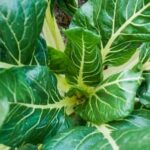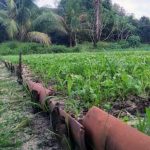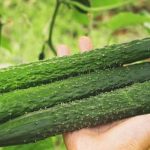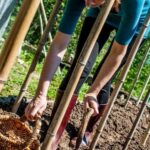Container gardening is a versatile and accessible way to grow your own vegetables, even if you have limited space or lack a backyard. With the right containers, tools, location, and selection of vegetables, anyone can enjoy the rewards of growing their own produce.
In this article, we will guide beginners through the wonderful world of container gardening vegetables, providing tips on container selection, essential tools and supplies, ideal locations, best vegetable choices, soil and fertilizers, watering and maintenance techniques, common pests and diseases to watch out for, and finally, how to harvest and enjoy the fruits (or veggies) of your labor.
Gardening in containers offers numerous benefits for beginners stepping into the world of gardening. Not only does it provide an opportunity to grow fresh and healthy veggies at home but also brightens up small spaces like balconies or windowsills. Imagine biting into a juicy tomato or savoring a crisp cucumber that you grew yourself. Container gardening allows you to experience the joy of nurturing plants from seedlings to harvest without the need for a large plot of land.
In this comprehensive guide for beginners interested in container gardening vegetables, we will walk you through all aspects necessary for success in this rewarding endeavor. From choosing the right containers to understanding soil composition and watering techniques – we’ve got you covered. So let’s dive into the exciting world of container gardening vegetables and get started on your journey towards enjoying homegrown produce.
Choosing the Right Containers
When it comes to container gardening, choosing the right containers is essential for the success of your vegetable garden. The type and size of containers you select can greatly impact the growth and productivity of your plants. Here are some factors to consider when selecting containers for your vegetable garden.
Firstly, consider the material of the containers. There are several options available, including clay pots, plastic containers, fabric pots, and wooden boxes. Each material has its advantages and disadvantages. For example, clay pots provide good drainage but can be heavy and prone to cracking in cold weather.
Plastic containers are lightweight and durable but may not have as good drainage as clay pots. Fabric pots offer excellent drainage and air circulation but may require more frequent watering. Wooden boxes can be customized in size and are aesthetically pleasing, but they should be treated to prevent rotting.
Secondly, consider the size of the containers. Most vegetables require a minimum of 5 gallons (19 liters) of soil volume for optimal growth, although larger plants like tomatoes may need even bigger containers. Make sure that your chosen containers have enough space for root development and that they can support the mature height and spread of your chosen vegetables.
Lastly, consider additional features that may benefit your container gardening experience. Look for containers with built-in water reservoirs or self-watering systems if you have a busy schedule or live in a hot climate. You may also want to choose containers with handles if you plan on moving them frequently or if you have limited mobility.
By taking these factors into account when selecting your containers, you will be on your way to creating a thriving container vegetable garden that will bring joy and abundance to your homegrown harvests.
Essential Tools and Supplies for Successful Container Gardening
Container gardening is a popular and convenient way to grow vegetables, especially for beginners. To ensure success with your container garden, it is important to have the right tools and supplies on hand. These essential items will help you create a thriving vegetable garden in your containers.
Firstly, you will need suitable containers for your plants. The type of container you choose will depend on the size of the plant and its root system. For smaller plants, such as herbs or lettuce, individual pots can be used. Larger plants, like tomatoes or peppers, will require bigger containers such as plastic or ceramic pots. Additionally, make sure that each container has drainage holes to prevent waterlogging and root rot.
Next, investing in good quality potting soil is crucial for successful container gardening. Regular garden soil is not recommended as it may not provide the necessary nutrients and drainage for potted plants. Look for potting soil mixes that are specifically formulated for container gardening. These mixes are lightweight, well-draining, and often enriched with organic matter to promote healthy growth.
Another essential tool for successful container gardening is a watering can or hose with a nozzle attachment. Regular watering is vital for healthy plant growth in containers since they tend to dry out more quickly than plants in the ground. A watering can allows you to control the amount of water you give to each plant and helps prevent overwatering. Alternatively, a hose with a misting nozzle provides gentle watering for delicate seedlings or young plants.
In addition to these basic tools and supplies, it is also beneficial to have some optional items on hand. A hand trowel or small shovel will come in handy when planting or repotting your vegetables. Pruning shears or scissors can be used to trim dead leaves or harvest vegetables as they become ripe. Plant stakes or cages might also be needed to support taller plants like tomato vines.
Overall, having the right tools and supplies is crucial for successful container gardening. By choosing the appropriate containers, using quality potting soil, and investing in essential tools like a watering can, you will be well on your way to creating a thriving vegetable garden in your containers.
| Essential Tools | Essential Supplies |
|---|---|
| Containers (pots or planters) | Potting soil |
| Watering can or hose with nozzle attachment | Hand trowel or small shovel |
| Pruning shears or scissors | Plant stakes or cages (optional) |
Selecting the Perfect Location
When it comes to container gardening, selecting the perfect location for your vegetable containers is crucial. The right spot can make all the difference in the success and productivity of your plants. Here are some important considerations to keep in mind when finding the ideal location for your container garden.
Sunlight Requirements
One of the most important factors to consider when choosing a location for your vegetable containers is sunlight. Most vegetables require at least six hours of direct sunlight each day, so it’s essential to choose a spot that receives adequate sunlight throughout the day. Take note of how the sun moves across your outdoor space and select a location where your containers will receive maximum sunlight.
Accessibility
Another factor to consider is accessibility. Make sure you choose a location that is easily accessible so you can tend to your plants without any hurdles. This includes both convenience for watering and maintenance as well as ease of harvest when your crops are ready.
Protection from Elements
While sunlight is important, it’s also crucial to protect your vegetable containers from harsh elements such as strong winds or extreme temperatures. Choose a location that offers some level of protection, such as against a wall or near existing structures that can act as windbreakers.
Drainage
Good drainage is vital for container gardening success. Ensure that the location you choose allows excess water to drain freely from the containers, preventing waterlogged soil which can harm plant roots.
These considerations will help you find an ideal spot for your vegetable containers that will provide optimal conditions for their growth and productivity. By carefully selecting the perfect location, you’re setting yourself up for a successful container gardening experience.
Best Vegetables for Container Gardening
Container gardening is a fantastic option for those with limited space who still want to grow their own vegetables. With the right containers and proper care, you can grow a variety of delicious vegetables right on your patio or balcony. In this section, we will explore some of the best vegetables for container gardening.
- Tomatoes: Tomatoes are one of the most popular choices for container gardening. They come in many different varieties, allowing you to select the ones that suit your taste preferences. Determinate tomato varieties, such as ‘Celebrity’ or ‘Roma,’ work well in containers as they have a more compact growth habit.
- Peppers: Another great vegetable for container gardening is peppers. Both sweet and hot pepper varieties can thrive in containers. Look for compact varieties like ‘Mini Bell’ or ‘Lunchbox’ for smaller containers. Peppers require plenty of sunlight and warm temperatures to flourish, so make sure your chosen location can provide these conditions.
- Lettuce: If you’re looking for a quick-yielding crop, lettuce is an excellent choice. Varieties like ‘Black-seeded Simpson’ or ‘Buttercrunch’ are ideal for container gardening due to their compact size and fast growth rate. Harvest individual leaves as needed or wait until the entire head is ready.
- Radishes: Radishes are perfect for beginners since they grow quickly and require minimal maintenance. Compact varieties like ‘Cherry Belle’ or ‘French Breakfast’ fit well in smaller containers while offering spicy and crunchy roots that can be harvested within a few weeks.
To ensure success with these vegetables and others in your container garden, pay attention to their specific requirements regarding sunlight, water needs, and soil type. Regular monitoring and maintenance will help keep pests and diseases at bay so you can enjoy a bountiful harvest from your container garden.
Soil and Fertilizers
When it comes to container gardening, the soil you use is of utmost importance. Unlike traditional gardens where plants can spread their roots in search of nutrients, container plants rely solely on the soil within their limited space. Therefore, choosing the right soil and fertilizers is essential for nutrient-rich container gardening.
The first step in creating a nutrient-rich soil mix for your container garden is to choose a high-quality potting mix. Avoid using regular garden soil as it may compact too much and hinder drainage. Instead, opt for a specially formulated potting mix that is lightweight, well-draining, and rich in organic matter. These mixes are typically composed of a blend of peat moss, compost, perlite or vermiculite, and other ingredients that help promote adequate drainage while retaining moisture.
Additionally, consider adding fertilizers to provide your plants with the necessary nutrients they need to thrive in containers. Organic fertilizers, such as compost or well-rotted manure, are excellent choices for container gardening as they slowly release nutrients over time. You can also use water-soluble fertilizers specifically designed for container plants, which provide an immediate boost of nutrients when applied according to label instructions.
In order to maintain the nutrient levels in your container garden throughout the growing season, it’s important to regularly feed your plants with organic matter or water-soluble fertilizers. Keep in mind that container plants have limited access to natural sources of nutrients compared to those grown in the ground. Therefore, consistent feeding is crucial for healthy growth and abundant yields.
| Soil | Fertilizer |
|---|---|
| High-quality potting mix | Organic fertilizer such as compost or well-rotted manure |
| Lightweight and well-draining | Water-soluble fertilizer for container plants |
| Rich in organic matter | Regular feeding throughout the growing season |
By providing your container plants with nutrient-rich soil and regular fertilization, you can ensure healthy growth, vibrant foliage, and bountiful harvests. Remember to follow the instructions provided by the manufacturer for both the potting mix and fertilizers to achieve optimal results. With proper care, your container gardening venture will surely yield delicious vegetables to enjoy throughout the season.
Watering and Maintenance Tips
Maintaining proper watering and providing consistent care are essential for the success of your container vegetable garden. Here are some helpful tips to keep your plants thriving:
- Determine the watering needs: Different vegetables have different water requirements, so it’s important to understand the specific needs of each plant. Some vegetables, like tomatoes and cucumbers, require more water than others. Research the watering needs of the vegetables you have chosen to grow to ensure you provide them with the right amount of moisture.
- Establish a watering schedule: Consistency is key when it comes to watering container plants. Create a watering schedule based on the specific needs of your vegetables and stick to it. It’s better to water deeply but less frequently, allowing the soil to dry out slightly between waterings, rather than frequent shallow waterings.
- Monitor moisture levels: Regularly check the moisture level in your containers by inserting your finger into the soil up to your knuckle. If it feels dry at that depth, it’s time to water again. However, be careful not to overwater as it can lead to root rot and other issues.
- Use proper drainage: Ensure that each container has adequate drainage holes at the bottom. Without proper drainage, excess water can accumulate in the container and cause root rot or other problems. You can place a layer of small rocks or pebbles at the bottom of each container before adding soil for better drainage.
- Mulch your containers: Applying a layer of organic mulch on top of the soil helps retain moisture, prevents weed growth, and regulates soil temperature. Mulching also adds nutrients as it breaks down over time, promoting healthier plant growth.
- Keep an eye on pests and diseases: Regularly inspect your plants for any signs of pests or diseases such as aphids, whiteflies, or fungal infections. Early detection is crucial for effective treatment and preventing further damage to your plants.
- Prune and trim regularly: To promote healthy growth, remove any yellowing or damaged leaves from your plants. Pruning and trimming also help to control the size and shape of your plants, especially for vining vegetables like beans or peas.
Maintaining a thriving container garden requires attentiveness and proper care. By following these watering and maintenance tips, you’ll be well on your way to enjoying an abundant harvest from your container vegetable garden.
Common Pests and Diseases
Container gardening can be a great way to grow vegetables in limited space, but like any form of gardening, it is not without its challenges. One of the most common challenges that container gardeners face is dealing with pests and diseases. However, with the right knowledge and a proactive approach, you can identify and treat these issues effectively.
Identifying Common Pests
Pests such as aphids, slugs, snails, and caterpillars are some of the most common pests you may encounter in your container garden. Recognizing the signs of pest infestation early on is crucial to preventing further damage to your plants. Look out for chewed leaves or stems, visible eggs or larvae on your plants, or holes in fruits or vegetables. Additionally, keep an eye on any unusual discoloration or wilting of leaves.
Treating Pest Infestations
There are several ways to treat pest infestations in container gardening. One method is to manually remove the pests by handpicking them off your plants and dropping them into a bucket of soapy water. Another option is using insecticidal soap or neem oil sprays that are safe for edible plants. These products can be applied directly to the affected areas according to their instructions.
Common Diseases and Their Treatment
In addition to pests, diseases can also affect your container garden. Fungal diseases like powdery mildew and root rot are common issues that can impact the health of your vegetables. To prevent fungal diseases, ensure proper air circulation around your plants and avoid overwatering. If you notice signs of disease such as discolored or wilting leaves, spots on foliage or fruit, or stunted growth, take immediate action.
Treating plant diseases often involves removing infected parts of the plant and disposing of them properly to prevent further spread. You can also use organic fungicides or copper-based sprays to control fungal diseases. It’s important to refer to the specific instructions of the product and use them as directed.
By being vigilant and taking proactive measures, you can minimize the impact of pests and diseases in your container garden. Regularly inspecting your plants, practicing good sanitation, and providing proper plant care will go a long way in maintaining a healthy and thriving vegetable garden in containers.
Harvesting and Enjoying the Fruits (or Veggies) of Your Labor
Once your container vegetable garden has started to thrive and produce crops, it’s time to enjoy the fruits (or veggies) of your labor. Harvesting your homegrown vegetables is one of the most satisfying aspects of container gardening. Not only do you get to taste the fresh flavors that can’t compare to store-bought produce, but you also have the pride of knowing that you grew it yourself.
To ensure a successful harvest, it’s important to monitor your plants regularly and pick vegetables at their peak ripeness. Most vegetables are ready for harvesting when they have reached their full color or size, depending on the variety. For example, tomatoes should be picked when they have turned a bright red and are firm but not overly ripe.
When harvesting leafy greens like lettuce or spinach, it’s best to pick individual leaves rather than removing the whole plant. This allows the remaining leaves to continue growing and ensures a continuous supply throughout the season. On the other hand, root vegetables such as carrots or radishes should be pulled out completely from the soil.
Once harvested, vegetables should be used as quickly as possible for maximum freshness and flavor. If you have an abundance of produce, consider sharing with friends or family or even donating to local food banks or community organizations.
In addition to enjoying your homegrown vegetables in their raw form, container gardening offers endless culinary possibilities. Get creative in the kitchen by incorporating your freshly harvested veggies into salads, stir-fries, soups, pastas, or even homemade salsas and sauces. The options are virtually endless when it comes to creating delicious meals with your own container-grown bounty.
By savoring the rewards of container gardening through harvesting and cooking with your homegrown vegetables, you’ll not only enhance your culinary experiences but also gain a deeper appreciation for the connection between food and nature. So, get ready to reap what you’ve sown and enjoy the bountiful harvest that container gardening can bring.
Conclusion
Container gardening vegetables can be a rewarding and enjoyable experience for beginners. The flexibility of container gardening allows individuals with limited space or access to outdoor areas to still enjoy the benefits of growing their own vegetables. By following the tips and guidelines outlined in this article, anyone can get started with container gardening today.
Choosing the right containers is an important first step in successful container gardening. By selecting containers that are appropriate for the size of your chosen vegetables and have proper drainage, you can create an optimal growing environment for your plants. Additionally, having essential tools and supplies on hand will make planting and maintaining your container garden much easier.
Location is another crucial factor to consider when starting a container vegetable garden. Finding a spot that provides adequate sunlight and protection from harsh weather conditions is essential for the healthy growth of your plants. By selecting the perfect location, you can ensure that your vegetable containers thrive.
Once you have set up your container garden, it is important to maintain it properly. Regular watering, fertilizing, and monitoring for pests and diseases are key factors in keeping your plants healthy. With proper care and attention, you will soon be able to enjoy a bountiful harvest of fresh vegetables from your own container garden.
In conclusion, container gardening vegetables is a great way to start growing your own food even if you have limited space or resources. By following the guidelines provided in this article, beginners can easily get started with their own container gardens today. So don’t hesitate – grab some containers, select your favorite vegetables, and begin enjoying the rewards of container gardening.
Frequently Asked Questions
What is the easiest vegetable to grow in a container?
The easiest vegetable to grow in a container is the leafy green lettuce. Lettuce is a versatile and fast-growing vegetable that thrives in containers due to its shallow root system. It does not require a large space and can be grown successfully in small pots or even hanging baskets.
Lettuce prefers cooler temperatures, making it a suitable choice for both indoor and outdoor container gardening. Additionally, by opting for loose-leaf varieties, you can harvest individual leaves as needed while allowing the remaining plant to continue growing.
What are the best vegetables for container gardening?
When it comes to container gardening, some of the best vegetables to grow are tomatoes, peppers, beans, herbs, and radishes. Tomatoes are popular among container gardeners due to their high productivity and compact varieties designed specifically for containers. Peppers grow well in containers as long as they have enough sunlight and warmth.
Beans are another excellent choice as they thrive in containers and produce a rewarding harvest within a relatively short period of time. Growing herbs such as basil, parsley, or mint provides flavor and aroma while not requiring much space. Finally, radishes are ideal for smaller containers because they mature quickly and do not need much depth.
How deep do containers need to be to grow vegetables?
Containers used for growing vegetables typically need to be at least 8 inches deep; however, this can vary depending on the type of vegetable being grown. As a general rule of thumb, most plants thrive in containers with depths ranging from 8 to 12 inches, which provides enough room for root development and secure anchoring of the plant’s structure.
However, deeper-rooted vegetables like tomatoes may require larger containers with depths between 14 to 18 inches or more to ensure sufficient soil volume for their optimal growth. Remember that the depth requirement also depends on the size of the specific variety being cultivated; some compact or dwarf varieties may need less depth compared to larger ones.

If you’re looking to get into vegetable gardening, or are just looking for some tips on how to make your current garden better, then you’ve come to the right place! My name is Ethel and I have been gardening for years. In this blog, I’m going to share with you some of my best tips on how to create a successful vegetable garden.





